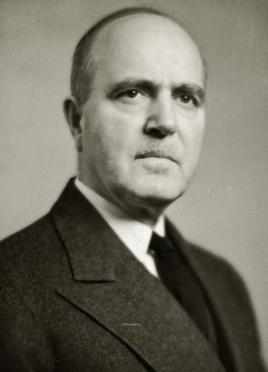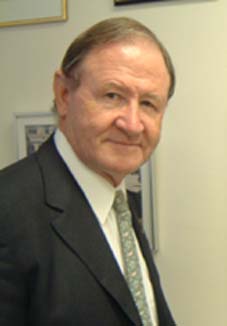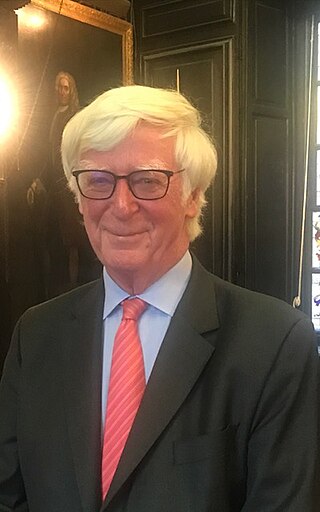
Carpal tunnel syndrome (CTS) is the collection of symptoms and signs associated with median neuropathy at the carpal tunnel. Most CTS is related to idiopathic compression of the median nerve as it travels through the wrist at the carpal tunnel (IMNCT). Idiopathic means that there is no other disease process contributing to pressure on the nerve. As with most structural issues, it occurs in both hands, and the strongest risk factor is genetics.

Legg–Calvé–Perthes disease (LCPD) is a childhood hip disorder initiated by a disruption of blood flow to the head of the femur. Due to the lack of blood flow, the bone dies and stops growing. Over time, healing occurs by new blood vessels infiltrating the dead bone and removing the necrotic bone which leads to a loss of bone mass and a weakening of the femoral head.

A bone tumor is an abnormal growth of tissue in bone, traditionally classified as noncancerous (benign) or cancerous (malignant). Cancerous bone tumors usually originate from a cancer in another part of the body such as from lung, breast, thyroid, kidney and prostate. There may be a lump, pain, or neurological signs from pressure. A bone tumor might present with a pathologic fracture. Other symptoms may include fatigue, fever, weight loss, anemia and nausea. Sometimes there are no symptoms and the tumour is found when investigating another problem.

Dallas Burton Phemister was an American surgeon and researcher who gave his name to several medical terms. During his career, he was the president of the American Surgical Association and the American College of Surgeons, and was a member of the editorial board of the journal Annals of Surgery.

Osteochondritis dissecans is a joint disorder primarily of the subchondral bone in which cracks form in the articular cartilage and the underlying subchondral bone. OCD usually causes pain during and after sports. In later stages of the disorder there will be swelling of the affected joint which catches and locks during movement. Physical examination in the early stages does only show pain as symptom, in later stages there could be an effusion, tenderness, and a crackling sound with joint movement.
A meniscus transplant or meniscal transplant is a transplant of the meniscus of the knee, which separates the thigh bone (femur) from the lower leg bone (tibia). The worn or damaged meniscus is removed and is replaced with a new one from a donor. The meniscus to be transplanted is taken from a cadaver, and, as such, is known as an allograft. Meniscal transplantation is technically difficult, as it must be sized accurately for each person, positioned properly and secured to the tibial plateau. Its success also depends on donor compatibility, stability of the transplant, and long-term health of the underlying articular cartilage.
Rotationplasty, commonly known as a Van Nes rotation or Borggreve rotation, is a type of autograft wherein a portion of a limb is removed, while the remaining limb below the involved portion is rotated and reattached. This procedure is used when a portion of an extremity is injured or involved with a disease, such as cancer.

Adamantinoma is a rare bone cancer, making up less than 1% of all bone cancers. It almost always occurs in the bones of the lower leg and involves both epithelial and osteofibrous tissue.

Mervyn John Cross was an Australian rugby league footballer and orthopaedic surgeon. He played in Australia's major competition the New South Wales Rugby League (NSWRL) but Cross, a doctor, was better known for his achievements in the field of sports medicine as an orthopaedic surgeon.

An osteoid osteoma is a benign (non-cancerous) bone tumor that arises from osteoblasts and some components of osteoclasts. It was originally thought to be a smaller version of an osteoblastoma. Osteoid osteomas tend to be less than 1.5 cm in size. The tumor can be in any bone in the body but are most common in long bones, such as the femur and tibia. They account for 10 to 12 percent of all benign bone tumors and 2 to 3 percent of all abnormal bone growths. Osteoid osteomas may occur at any age, and are most common in patients between the ages of 4 and 25 years old. Males are affected approximately three times more commonly than females.

Shoulder impingement syndrome is a syndrome involving tendonitis of the rotator cuff muscles as they pass through the subacromial space, the passage beneath the acromion. It is particularly associated with tendonitis of the supraspinatus muscle. This can result in pain, weakness, and loss of movement at the shoulder.
David Marsh Bosworth was an American orthopedic surgeon and medical educator. He is remembered for describing the Bosworth fracture.

Sean Patrick Francis Hughes is emeritus professor of orthopaedic surgery at Imperial College London where he was previously professor of orthopaedic surgery and head of the department of surgery, anaesthetics and intensive care. Earlier in his career he had been professor of orthopaedic surgery at the University of Edinburgh.
Michael J. Bronson is an American orthopaedic surgeon who is Chairman of the Department of Orthopedic Surgery, Mount Sinai West and Mount Sinai Morningside, and Chief of Joint Replacement Surgery at the Icahn School of Medicine at Mount Sinai in New York, and the author of advances in the development of minimally invasive surgical instruments to advance unicondylar partial knee replacement, including the Vision Total Hip System, a widely used hip replacement system that avoids the use of cement.
Andrew C. Hecht is an American orthopaedic surgeon and a nationally recognized leader in surgery on the spine.
John H. Healey is an American cancer surgeon, researcher, and expert in the surgical treatment of benign and malignant bone tumors and other musculoskeletal cancers. He serves as Chair of the Orthopaedic Service and Stephen P. McDermott Chair in Surgery at Memorial Sloan-Kettering Cancer Center (MSKCC), as well as Professor of Surgery at Weill Cornell Medical College, in New York, NY.

William H. Harris, is an American orthopaedic surgeon, Founder and Director Emeritus of the Massachusetts General Hospital Harris Orthopaedics Laboratory, and creator of the Advances in Arthroplasty course held annually since 1970.

Ruth Wynne-Davies or Ruth Blower (1926–2012) was a British medical doctor and scholar of orthopaedics. She researched and wrote about clubfoot and scoliosis.
Charles Harry Epps, Jr. is an American orthopaedic surgeon who served as Dean of the Howard University College of Medicine.
Regional acceleratory phenomenon (RAP) is a sudden acceleration of normal tissue processes in reaction to noxious stimuli. It has been exploited in treatments such as the healing of atrophic or oligotrophic nonunions and surgically facilitated orthodontic therapy.











